LEARNING OBJECTIVES-
- Discovery of cell and cell
- The variety of cells
- Types of cells
- Comparison between-prokaryotic cells and eukaryotic cells; plant cells and animal cells
- The structure of cells
- Cell-division
- The functions of cells
DISCOVERY OF CELL-
The cell was discovered by Robert Hook in 1665 in cork cells. He discovered small pit or chamber like structures in cork slice with the help of a primitive microscope and called them as ‘cells’. The study of cells is called ‘cytology’.
Anton Von Leeuwenhoek (1674), discovered free living cells in pond water and bacteria with the help of improved microscope.
Robert Brown (1831), discovered ‘nucleus’ in the cell.
Purkinje (1839), coined the term ‘protoplasm’ for the fluid substance in the cell. Protoplasm is the living matter of the cell. Without protoplasm cell will be dead.
Protoplasm = Nucleus + Cytoplasm
Schleiden (1938) and Schwann (1939), presented ‘cell theory’. According to them, all the plants and animals are made up of cells. Cell is the fundamental or basic unit of life. Cell theory was further expanded by Virchow (1955). Virchow added that new cells arise from pre-existing cells.
A prototype electron microscope of 400 times magnification was discovered in 1931 by Ernst Ruska and Max Knoll. It made possible to observe and understand the complex structure of the cell.
CELL– The structural and functional unit of organism is called ‘cell’. Cells are similar to the bricks of a wall. The cells form the body of an organism. All the functions of the organisms are performed by the cell. Different group of cells perform different functions. A group of cells that have common origin and function is called ‘tissue’. E.g. -Nervous tissue, Bone tissue, Muscular tissue, Blood tissue etc. The study of tissue is called ‘histology’.
THE VARIETY OF CELLS– The cells show varieties in terms of number, shape and size.
VARIETY IN NUMBER OF CELLS– Some organisms are made up of just one cell; they are called as unicellular organisms. The one cell body does all the functions like respiration, digestion, excretion, growth, reproduction etc. e. g.- Amoeba, Paramecium etc.
Some organisms are made up of more than one cell are called multicellular organisms. The life of organisms having billions of cells begins from one cell called ‘zygote’ (a fertilized egg). The large organisms have more cells. e. g. Plants, Animals etc.
VARIETY IN SHAPE OF CELLS-On the basis of structure and function cells can be of many types. The shape of cells is based on their functions. Cells undergo differentiation to do different
VARIETY IN SIZE OF CELLS- The size of cells is related to their functions. The smallest cell is bacteria. Their size can be as small as 0.1 mm to 0.5 mm (micrometer). The largest cell is ostrich egg. Its size can be 170 mm x 130 mm.
The sizes of cells have no relation with the size of organism. e.g.- the rat and elephant have same size of nerve cells and they perform came functions.
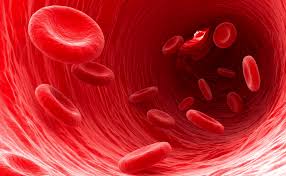
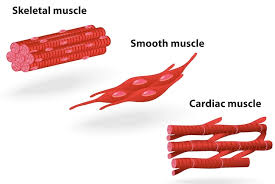
- Discoid shaped e.g.- R.B.Cs
- Spindle shaped e.g.- Muscle cells
- Irregular shaped e.g.- W.B.Cs, Amoeba- Its shape can change.
- Long, branched shape. E.g.- Nerve/ Nervous cell
-Longest cell-Neuron (Nerve cell)
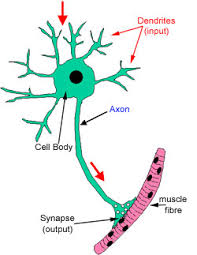
-Biggest cell- Ostrich cell
TYPES OF CELLS –
Since the time of Aristotle, the living organisms are broadly categorized into Plants and Animals. On the basis of this there are two broad categories of cells-
A. Plant Cells B. Animal cells
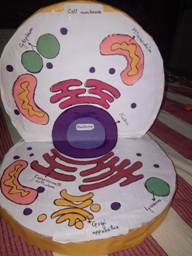
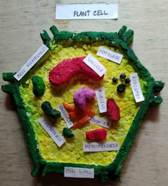
But, in this classification, bacteria and other small organisms don’t fit. So, another classification of cells was propounded. According to this cells are of two types-
A. Prokaryotic cells like- Bacteria

B. Eukaryotic cells like – Plant cells, Animals cells, Amoeba, Plasmodium, Fungi etc.
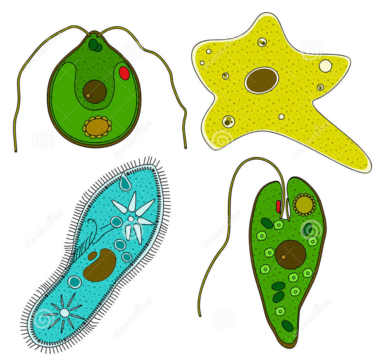
Differences between plant cells and animal cells–
| S.N. | PLANT CELL | ANIMAL CELL |
| 1 | They have cell wall. | Cell wall is absent. |
| 2 | They have chloroplast. | Chloroplast is absent. |
| 3 | They have large vacuole. | Vacuole is very small or absent. |
| 4 | Lysosome present. | Lysosome absent. |
| 5 | Shape is usually regular. | Shape is usually irregular. |
| 6 | Size is larger than animal cell. | Size is smaller than plant cell. |
| 7 | Many ‘Dictyosomes’ are found. | A single ‘Golgi apparatus’ is found. |
| 8 | Polar caps are found instead of centrosome and centrioles. | Centrosome and centrioles are found. |
Differences between Prokaryotic and Eukaryotic Cells- The prokaryotic cell and eukaryotic cell are two types of cells. The prokaryotic cells include bacteria and Cynobacteria (blue green algae)
In prokaryotic cells of bacteria and Cynobacteria (blue-green algae) there is an incipient or primary nucleus or nucleoid. It is not organized and fully developed as like eukaryotic cells. It is represented by D.N.A. only.
| S.N. | PROKARYOTIC CELL | EUKARYOTIC CELL |
| 1 | Found in Prokaryotes | Found in Eukaryotes |
| 2 | Incipient or Not well organized nucleus | Nucleus is well organized |
| 3 | Single Chromosomes represented by D.N.A. only | Many chromosomes are found |
| 4 | e.g. Bacteria, Cyanobacteria (blue-green algae) | e. g- Plant cell, Animal cell, Amoeba etc. |
| 5. | Size is between 1-10 micro meter (µm); {1 µm=10-6 m} | Size is between 5-100 µm (micro meter) |
| 6. | Membrane bound cell organelles are absent | Membrane bound cell organelles are present |
Genes are the functional unit of Chromosomes. The genes help in inheritance of characters i.e. transfer of characters from one generation to next. They determine the characteristics of organisms.
THE STRUCTURE OF CELLS-
The cell contains many cell organelles in their cytoplasm. e. g- Nucleus, Endoplasmic reticulum, Golgi body, Ribosomes, Lysosome , centrosome, Plastids like Chloroplast , Chromoplast and Leucoplast etc.
The shape of plant cells are fixed while the shape of animal cells is irregular due to cell wall.
1. Cell Wall- It is a permeable membrane outside the cell membrane of plant cells. The cell wall is also found in bacterial cells.
2. Cell membrane or Plasma membrane – It is the outermost protective layer of the animal cells. It separates the contents of the cell with the external environment. In plant cells it is inside the cell wall. It is a selectively permeable membrane.
Diffusion- The spontaneous movement of any substance from a region of higher concentration to a region of lower concentration is called diffusion. e. g.- Gases like Oxygen and Carbon dioxide diffuse through the cell membrane.
Osmosis-The movement of water molecules through a selectively permeable membrane like cell membrane is called osmosis. When the concentration is equal on both sides, osmosis stops. Osmosis is a special case of diffusion. There are two types of osmosis-
(a)The movement of solvent from a region of its lower solute concentration to a region of its higher solute concentration through a semi-permeable membrane is called as endosmosis.
(b)The movement of solvent from a region of its higher solute concentration to a region of its lower solute concentration through a semi-permeable membrane is called as exosmosis.
Tonicity and Types of solution- The amount of solute dissolved in a solution refers its concentration. If a solution has higher concentration of solutes, it means more solute are dissolved in it than the water. If a solution has lower concentration, it means less solute are dissolved in it than the water.
The concentration of one solution with another solution is called tonicity. In case of the cell, tonicity refers the differences in concentration of solutions inside the cell and outside the cell. If a plant or animal cell is dissolved in a sugar or salt solution, following things may happen-
(i) The water will move inside through cell membrane by endosmosis if the cell is placed in solution having higher water concentration. Such solution will be called hypotonic because it has more water and less solute than the inside solution. As a result the cell will swell up.
(ii) The water will move outside through cell membrane by exosmosis if cell is placed in a solution having lower water concentration. Such a solution will be called hypertonic because it has less water and more solute than the inside solution. As a result cell will shrink.
(iii) The water will neither move inside nor outside through cell membrane if the cell is placed in a solution having equal water concentration as compared to the cell. Such a solution will be called isotonic solution. The cell will stay the same size.
3. Cytoplasm– It is a jelly like substance in between the cell membrane and nucleus. It is a homogeneous, viscous and colloidal fluid. It contains water, nutrients, gases, organic matters, cell organelles, enzymes etc. If the cytoplasm and nucleus are present, the cell will be living. The fluid content inside the cell membrane is called cytoplasm. When we observed the temporary slides (mounts) onion peel and human cheek cell, the cytoplasm was observed to have light stain than cell wall and cell membrane. Cytoplasm is the living matter of the cells. In absence of cytoplasm, the cell will be a dead cell. Cytoplasm is about 80 % water and usually colourless.
The cytoplasm contains gel-like substance cytosol, cytoplasmic inclusions and a number of specialized cell organelles. The cell organelles perform specific function for the cell. Cell organelles have their membrane.
Cellular activities like cell division, glycolysis of respiration, movement of calcium ion etc take place in cytoplasm. The movement of cytoplasm around the vacuole in plant cell is called as cytoplasmic streaming.
4. Nucleus- It is the control center of all the activities inside the cell. It is true or fully developed in eukaryotic cells of plants, animals, amoeba etc.
It has nuclear membrane, nucleoplasm, chromosomes and nucleolus. Nucleus is a round dense cell organelle. The threads like structures in the nucleoplasm of nucleus are called as chromosomes. Chromosomes are basically made up of D.N.A. (Deoxyribonucleic Acid) and histone protein.
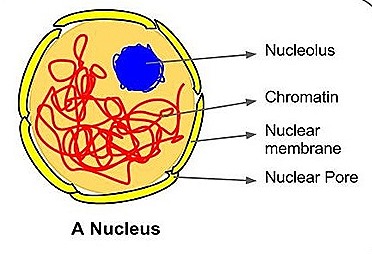
5. Plastids – They were discovered by Schimper. They are found in plant cells and certain bacteria and protozoa like Euglena. They are semi-autonomous cell organelles due to presence of own D.N. A. and 70 S ribosomes. They have double layered membrane and stroma as their matrix. Plastids are of three types-
A. Chloroplasts- They contain chlorophylls and help in photosynthesis by entrapping sunlight. They are green plastids. Because of their role as site of photosynthesis, they are called ‘kitchen of the plant cell’. Chlorophylls are found in thylakoids. Stroma lamellae and grana lamellae can be seen.
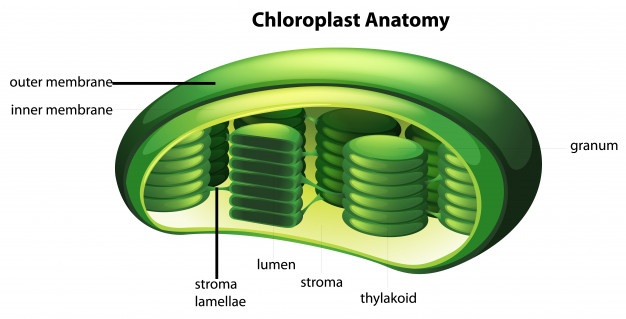
B. Chromoplast- They are of different colours other than green. Chromoplasts impart colours to flowers, fruits and leaves.
C. Leucoplasts- They are colourless plastids. They store the food prepared by plants. It is found in roots.
All the three types of plastids can be seen in potato tubers. Schimper discovered plastids.
6. Vacuoles – They are storage sac like cell organelles in the cytoplasm. They are large size in plant cells and very small in animal cells or absent. Vacuoles contain some liquids and solid contents called cell sap. In a few plants, vacuole may occupy 50-90 % of the cell volume. The outermost layer of the vacuole is called ‘tonoplast’.
Functions-Vacuoles provide rigidity, turgidity and stability to the shape of cells. Vacuoles also store important substances like amino acids, sugars, various organic substances and some proteins. Some vacuoles control amount of water and waste substances inside the cell, some store food and some other vacuoles help in buoyancy of cells.
Types-Vacuoles can be-
1. Sap Vacuoles- They contain minerals, amino acids, sugar, organic matters, protein etc.
2. Food Vacuole- In Amoeba, a unicellular eukaryotic micro-organism, vacuoles serve as storage sac for food. They are called as food vacuole.
3. Contractile Vacuoles- In Amoeba, Paramecium vacuoles help in expelling excess amount of water taken inside along with food. It controls the amount of water inside the cell which is called osmoregulation. They also help in expelling waste products from cells. It is excretion by cells.
4. Air Vacuoles- They contain air and help in buoyancy of cells. Thus help in floating the aquatic plants.
7. Endoplasmic Reticulum (E. R.)- It is a large network of membrane-bound tubes and sheets. It has long round tubes and vesicles. It is similar to cell membrane. It connects the cell membrane and nuclear membrane.
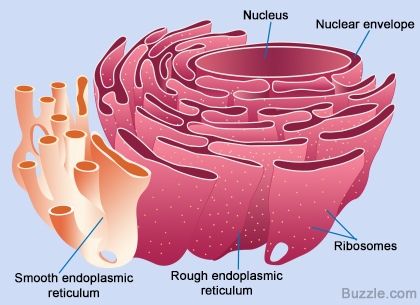
Types- (a) Rough Endoplasmic Reticulum (R. E. R.) (b) Smooth Endoplasmic Reticulum (S. E. R.)
The rough endoplasmic reticulum has Ribosomes attached over it. The smooth endoplasmic reticulums do not have ribosomes attached over their surface.
The proteins prepared by ribosomes are transported by endoplasmic reticulum to different places in the cell. The S.E.R. helps in manufacture of lipids (fats) that helps in cell functioning. The cell membrane is prepared from protein and lipids (fats). Preparation of cell membrane by so is called cell membrane biogenesis. Some other proteins and lipids work as enzymes and hormones.
Functions-
1. E.R. acts as a cytoplasmic framework to provide surface for some of the biochemical activities of the cell.
2. E.R. acts as channel for transport of materials like protein between cytoplasm and nucleus.
3. In vertebrates liver cells, SER helps in detoxifying many poisons and drugs.
4. S.E.R. helps in synthesis of lipids for cell membrane formation.
5. R.E.R. helps in protein synthesis for cell membrane formation.
8. Ribosomes- They are smallest cell organelles found in largest number in the cytoplasm, chloroplast and mitochondria. Their only function is to prepare proteins. They are of two types- (a) 70 S Ribosomes- They are found in prokaryotic cells like bacteria, Cynobacteria, plastids and mitochondria.
(b) 80 S Ribosomes- They are found in eukaryotic cells like plant cells and animal cells.
The ribosomes attached with endoplasmic reticulum make it rough endoplasmic reticulum.
9. Mitochondria- Mitochondria were discovered by Kolliker (1857). They are double layered cell organelles. Their outer membrane is porous and inner membrane has folding called cristae. On the inner layer there occur chemical reactions that form A. T. Ps (Adenosine Tri Phosphates). The oxidative enzymes help in oxidizing of glucose to form A. T. Ps. A.T.Ps are needed to run various biochemical reactions, mechanical works and formation of new compounds of living organisms. A.T.Ps are called ‘biological currency’ or ‘energy currency’.

Inside the mitochondria 70 S ribosomes and own genetic material (D.N.A.) is found. So, mitochondria are semi-autonomous cell organelles as like plastids. In highly active cells the number of mitochondria is comparatively more.
10. Lysosomes- They are formed from the Golgi Apparatus. They are found in animal cells. They are membrane bound sac filled from digestive enzymes. These enzymes are prepared by RER. The dead cell organelles and foreign bodies like food particles, bacteria coming inside the cell are digested by the lysosomes. So, they are like waste disposal system of the animal cells.
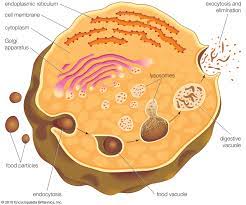
When the cell is damaged and its normal cellular metabolism ceases, the lysosome brusts and digest it’s own cell by the enzymes. So, lysosomes are called as ‘suicide bags’ or ‘digestive bags’ of the cell.
11. Golgi Body or Golgi Apparatus- Golgi apparatus were discovered by Camillo Golgi. It consists of a system of membrane-bound vesicles (flattened sacs). Arranged approximately parallel to each other in stacks called cisterns. Golgi apparatus often get connected with endoplasmic reticulum forming a complex cellular membrane system.
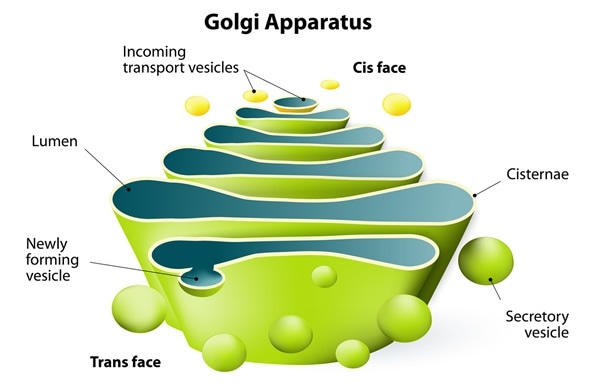
Functions-
1. Golgi apparatus helps in packaging and transportation of lipids and protein synthesized by endoplasmic reticulum.
2. They stores, can modify and help in packing of materials of vesicles.
3. They may form starch, cellulose like complex sugars from glucose like simple sugar (carbohydrates).
4. They form lysosomes.
12. Centrosome- Centrosome is found near nucleus in animal cells only. Centrosome contains two centrioles. The centrioles are surrounded by centrospheres. Centrioles have 9+2 structures.
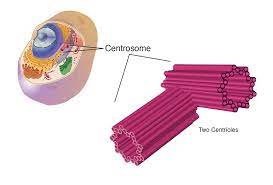
Functions-
1. Centrosome initiates and controls cell-division.
2. Centrosome forms spindle fibers during cell-division.
3. Centrosome forms basal bodies from which locomotory organs like cilia and flagella arise.
CELL-DIVISION- The process of formation of new cells from pre-existing cells is called cell-division. Cell-division occurs for growth, development of organism, replacement of dead, old, injured cells and for formation of gametes needed for sexual reproduction. There are two types of cell-divisions-
(a) Mitosis/ Mitotic cell-division-

(b) Meiosis/Meiotic cell division-
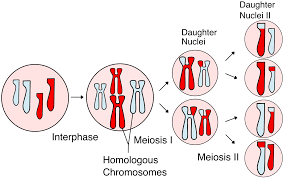
FUNCTIONS OF THE CELL– A the functions performed by cell organelles are the functions of cells. Broadly, the functions of cells are-
1. Cell forms the structure of organisms. Cells form ‘tissue’ and tissue form ‘organs’. Organs form ‘organ systems’. Organ systems form ‘organism’.
2. Cells perform every function of the organisms. Respiration, digestion, excretion, transportation, reproduction etc are due to activities of cells in one way or other.
3. New cells are produced by existing cells by cell-division. Due to new cells formation growth, development of organism, replacement of dead, old, injured cells, formation of gametes needed for sexual reproduction occurs.
4. The transfer of traits from one generation to the next occurs by gamete cells.
EXERCISE QUESTIONS ––
Q.1 Make a comparison and write down ways in which plant cells are different from animal cells.
Ans– Differences between plant cell and animal cell-
| S.N. | PLANT CELL | ANIMAL CELL |
| 1 | They have cell wall. | Cell wall is absent. |
| 2 | They have chloroplast. | Chloroplast is absent. |
| 3 | They have large vacuole. | Vacuole is very small, temporary or absent. |
| 4 | Lysosome absent. | Lysosome present. |
| 5 | Shape is usually regular. | Shape is usually irregular. |
| 6 | Size is larger than animal cell. | Size is smaller than plant cell. |
| 7 | Many ‘Dictyosomes’ are found. | A single ‘Golgi apparatus’ is found. |
| 8 | Polar caps are found instead of centrosome and centrioles. | Centrosome and centrioles are found. |
Q.2 How is prokaryotic different from a eukaryotic cell?
Ans-
| S.N. | PROKARYOTIC CELL | EUKARYOTIC CELL |
| 1 | Found in Prokaryotes | Found in Eukaryotes |
| 2 | Incipient or Not well organized nucleus | Nucleus is well organized |
| 3 | Single Chromosomes represented by D.N.A. only | Many chromosomes are found |
| 4 | e.g. Bacteria, Cynobacteria (blue-green algae) | e. g- Plant cell, Animal cell, Amoeba etc. |
| 5. | Size is between 1-10 micro meter (µm); {1 µm=10-6 m} | Size is between 5-100 µm (micro meter) |
| 6. | Membrane bound cell organelles are absent | Membrane bound cell organelles are present |
Q.3 What would happen if the plasma membrane ruptures or breaks down?
Ans– Following things will happen if the plasma membrane ruptures or breaks down-
(a) The normal size of cell will not be maintained.
(b) Ruptured or broken plasma membrane will not be able to hold cytoplasm and cell organelles inside.
(c) There will not be any difference between cell content and external environment.
Q.4 What would happen to the life of a cell if there was no Golgi apparatus?
Ans- Golgi apparatus is vital for cells. In absence of it the cell will show following effects-
(a) Due to absence of Golgi apparatus cell will not be able in packaging and transportation of lipids and protein synthesized by endoplasmic reticulum.
(b) Due to absence of Golgi apparatus cell will not be able to do packing of materials of vesicles.
(c) They may form starch, cellulose like complex sugars from glucose like simple sugar (carbohydrates).
(d) Cell will not be able to form lysosomes.
Q.5 Which organelle is known as the powerhouse of the cell? Why?
Ans- Mitochondria are called as power house of the cell. They are double layered cell organelles. Their outer membrane is porous and inner membrane has folding called cristae. On the inner layer there occur chemical reactions that form A. T. Ps (Adenosine Tri Phosphates). The oxidative enzymes help in oxidizing of glucose to form A. T. Ps. A.T.Ps are needed to run various biochemical reactions, mechanical works and formation of new compounds of living organisms. A.T.Ps are called ‘biological currency’ or ‘energy currency’. Therefore, mitochondria are called ‘power house of the cell’.
Q.6 Where do the lipids and proteins constituting the cell membrane get synthesized?
Ans- SER (Smooth Endoplasmic Reticulum) helps in synthesis of lipids for cell membrane formation. R.E.R. (Rough Endoplasmic Reticulum) helps in protein synthesis for cell membrane formation.
Q.7 How does an Amoeba obtain its food?
Ans- Amoeba obtains its food by ‘endocytosis’ method. This is an ingestion process in which the food is taken through cell membrane. The cell membrane is flexible, so the planktons and other organic food materials are eaten by Amoeba through endocytosis.
Q.8 What is osmosis?
Ans- The movement of water molecules through a selectively permeable membrane like cell membrane is called osmosis. When the concentration is equal on both sides, osmosis stops. Osmosis is a special case of diffusion. There are two types of osmosis-
(a)The movement of solvent from a region of its lower concentration to a region of its higher concentration through a semi-permeable membrane is called as endosmosis.
(b)The movement of solvent from a region of its higher concentration to a region of its lower concentration through a semi-permeable membrane is called as exosmosis.
Q.9 Carry out the following osmosis experiment:
Take four peeled potato halves and scoop each one out to make potato cups. One of these potato cups should be made from a boiled potato. Put each potato cup in a trough containing water. Now,
(a) Keep cup ‘A’ empty
(b) Put one teaspoon sugar in cup ‘B’
(c) Put one teaspoon salt in cup ‘C’
(d) Put one teaspoon sugar in the boiled potato cup ‘D’.
Keep these for two hours. Then observe the four potato cups and answer the following:
(i) Explain why water gathers in the hollowed portion of ‘B’ and ‘C’.
(ii) Why is potato ‘A’ necessary for this experiment?
(iii) Explain why water does not gather in the hollowed out portions of ‘A’ and ‘D’.
Ans-(i) The water gathers in the hollowed portion of ‘B’ and ‘C’ due to endosmosis. The sugar and salt present in them increase the concentration than the outside. As a result water enters inside from outside.
(ii) Potato ‘A’ is used as a control for this experiment. It helps in comparing the results in other potatoes.
(iii) Potato ‘A’ does not show osmosis because there is no difference in concentration in hollow part and outside part.
Potato ‘D’ does not show osmosis although sugar is present in it because the selectively permeable cell membranes of potato cells are destroyed due to boiling.
Q.10 Which type of cell division is required for growth and repair of body and which type is involved in formation of gametes?
Ans-Mitosis helps in growth and repair of body. Meiosis helps in formation of gametes like eggs (in females) and sperms (in males).
whats better viagra or cialis Ultrasound showed a good lining thickness, good uterus shape, and no scarring
cialis with dapoxetine Why the TWO doctors I saw prior to that did not think I may be one of those people when I said Codeine didn t work for me in the past, is beyond me
Hello there! This is my first visit to your blog! We are a group of volunteers and starting a new initiative in a community in the same niche.
Your blog provided us valuable information to work on. You have done a marvellous job!
Thanks…looking hopeful.
https://newfasttadalafil.com/ – Cialis Wivkzt Priligy Valor Buzauz cialis on line C’Est Quoi Le Viagra Dhmnvi Canadian Vegga 100 https://newfasttadalafil.com/ – Cialis
Pingback: куплю котел
viagra generic canadian pharmacy online pharmacy busted
walgreens pharmacy online online medicine shopping
canadian pharmacy online viagra https://disvaiza.mystrikingly.com/
Tq sir for this file
You are great sir